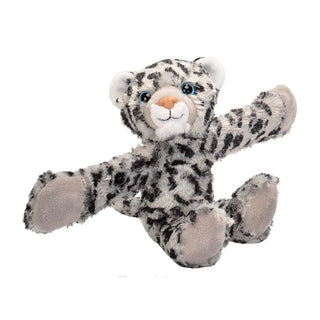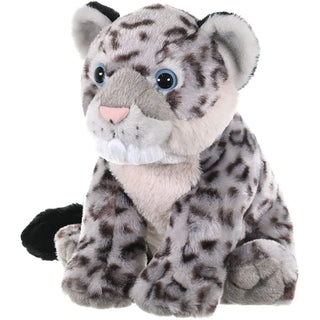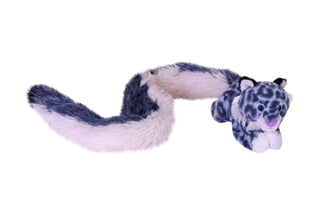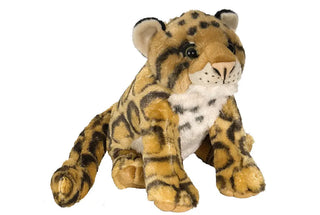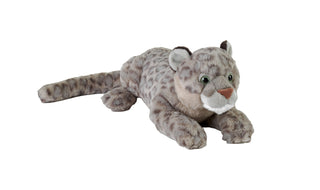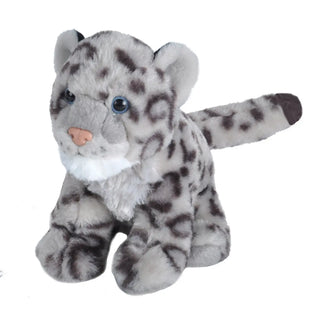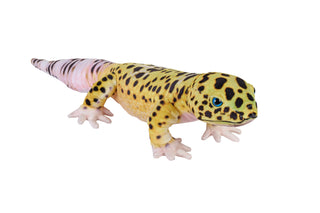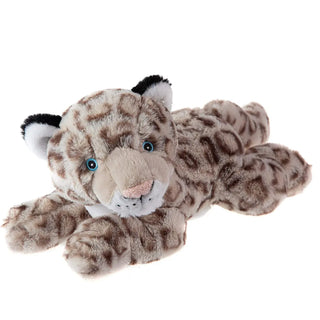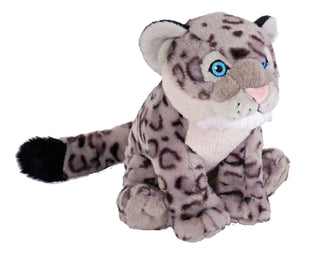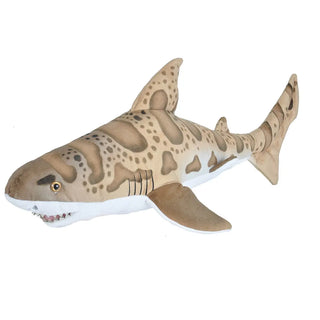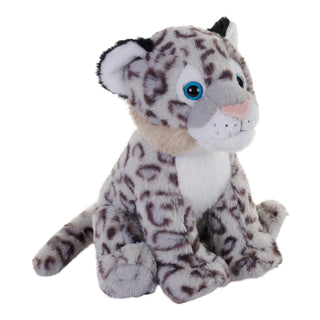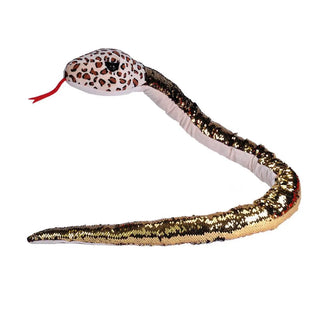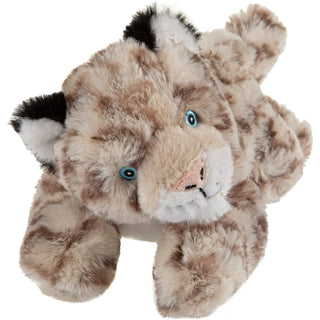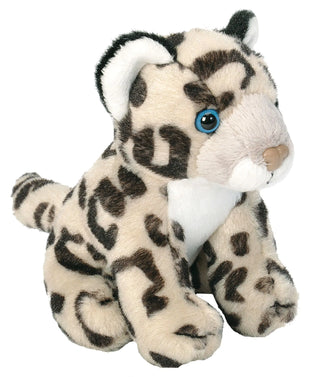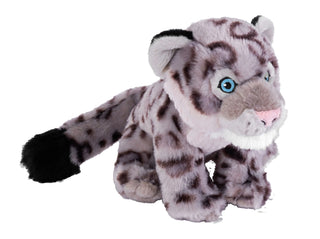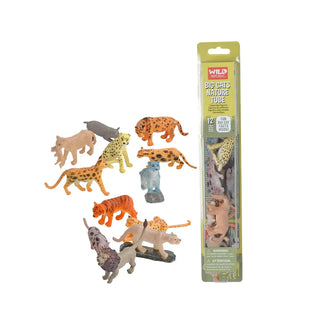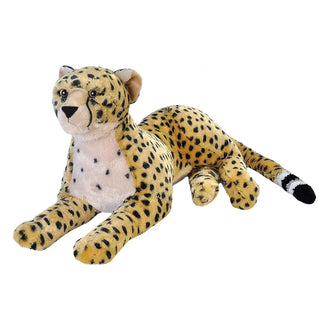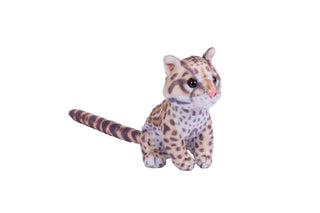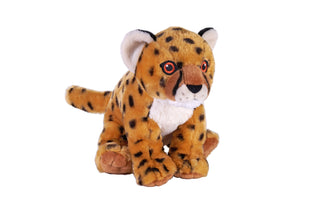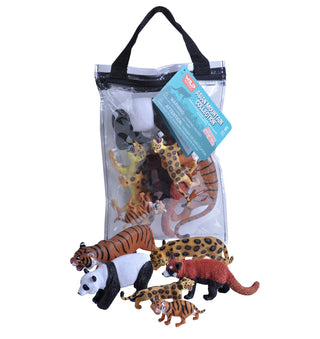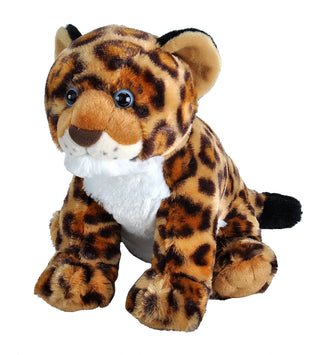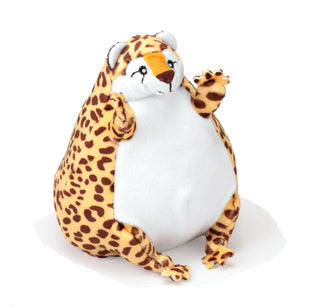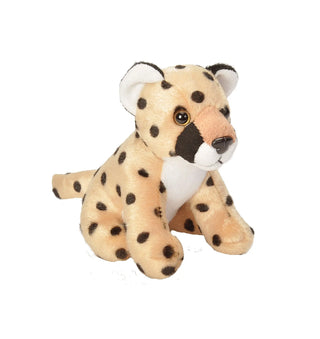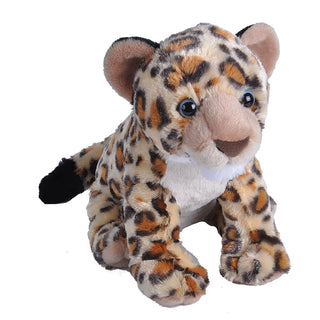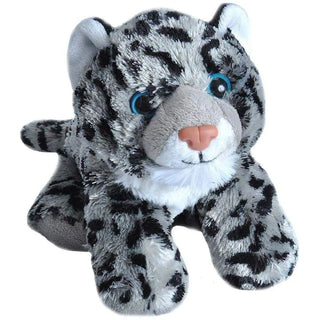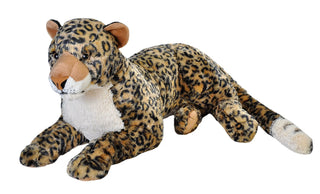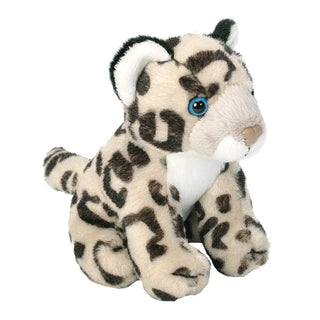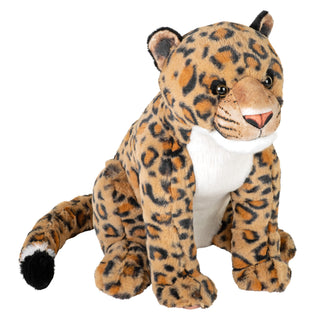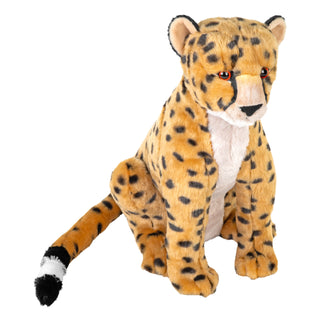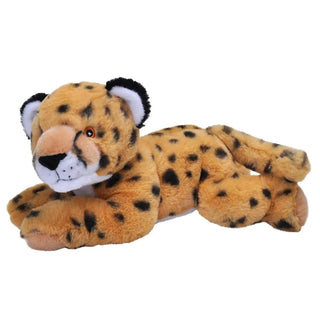Your Search For "leopard" Revealed The Following:
Filter
Active Filters
Huggers Snow Leopard Stuffed Animal - 8"
$10.99
- Unit price
- / per
INCLUDES:
- Age:10M+
- AnimalType:Snow Leopard
- Brand:Huggers
- Easter
- Gender:Boy
- Gender:Girl
- Size:8"
- Snow Leopard
$10.99
- Unit price
- / per
Snow Leopard Cub Stuffed Animal - 12"
$22.99
- Unit price
- / per
INCLUDES:
- Age:0+
- AnimalType:Leopard
- Brand:Cuddlekins
- Gender:Boy
- Gender:Girl
- Leopard
- Size:12"
$22.99
- Unit price
- / per
Tailkins Snow Leopard Stuffed Animal - 40"
$23.99
- Unit price
- / per
INCLUDES:
- Age:0+
- Brand:Tailkins
- Gender:Boy
- Gender:Girl
- Size:40"
$23.99
- Unit price
- / per
Clouded Leopard Stuffed Animal - 12"
$22.99
- Unit price
- / per
INCLUDES:
- Age:0+
- AnimalType:Clouded Leopard
- Brand:Cuddlekins
- Clouded Leopard
- Gender:Boy
- Gender:Girl
- Size:12"
$22.99
- Unit price
- / per
Earthkins Snow Leopard Stuffed Animal - 15"
$40.99
- Unit price
- / per
INCLUDES:
- Age:0+
- Brand:Earthkins
- Gender:Boy
- Gender:Girl
- Size:15"
$40.99
- Unit price
- / per
Baby Snow Leopard Stuffed Animal - 8"
$12.99
- Unit price
- / per
INCLUDES:
- Age:0+
- AnimalType:Snow Leopard
- Brand:Cuddlekins
- Gender:Boy
- Gender:Girl
- Size:8"
- Snow Leopard
$12.99
- Unit price
- / per
Flip Cars Tiger/Snow Leopard Action Toy - 3.5"
$8.99
- Unit price
- / per
INCLUDES:
- Age:3+
- Brand:Flip Cars
- Gender:Boy
- Gender:Girl
- Size:3.5"
$8.99
- Unit price
- / per
Living Earth Leopard Gecko Stuffed Animal - 24"
$38.99
- Unit price
- / per
INCLUDES:
- Age:0+
- Brand:Living Earth
- Gender:Boy
- Gender:Girl
- Size:24"
$38.99
- Unit price
- / per
Snow Leopard Ecokins
$19.99
- Unit price
- / per
INCLUDES:
- Age:0+
- AnimalType:Snow Leopard
- Brand:Ecokins
- Gender:Boy
- Gender:Girl
- Snow Leopard
$19.99
- Unit price
- / per
Cuddlekins Eco Snow Leopard Cub Stuffed Animal - 12"
$24.99
- Unit price
- / per
INCLUDES:
- Age:0+
- Brand:Cuddlekins Eco
- Features:Eco
- Gender:Boy
- Gender:Girl
- Size:12"
$24.99
- Unit price
- / per
Leopard Shark Stuffed Animal - 20"
$43.99
- Unit price
- / per
INCLUDES:
- Age:0+
- AnimalType:Leopard Shark
- Brand:Living Ocean
- Gender:Boy
- Gender:Girl
- Leopard Shark
- Size:20"
$43.99
- Unit price
- / per
Earthkins Mini Snow Leopard Stuffed Animal - 8"
$22.99
- Unit price
- / per
INCLUDES:
- Age:0+
- Brand:Earthkins Mini
- Gender:Boy
- Gender:Girl
- Size:8"
$22.99
- Unit price
- / per
Leopard Sequin Snake Stuffed Animal - 54"
$24.99
- Unit price
- / per
INCLUDES:
- Age:0+
- AnimalType:Snake
- Brand:Snakesss
- Gender:Boy
- Gender:Girl
- Size:54"
- Snake
$24.99
- Unit price
- / per
Snow Leopard Ecokins Mini
$11.99
- Unit price
- / per
INCLUDES:
- Age:0+
- AnimalType:Snow Leopard
- Brand:Ecokins
- Gender:Boy
- Gender:Girl
- Snow Leopard
$11.99
- Unit price
- / per
Pocketkins Eco Snow Leopard Stuffed Animal - 5"
$8.99
- Unit price
- / per
INCLUDES:
- Age:0+
- Brand:Pocketkins Eco
- Features:Eco
- Gender:Boy
- Gender:Girl
- Size:5"
$8.99
- Unit price
- / per
Cuddlekins Eco Snow Leopard Cub Stuffed Animal - 8"
$14.99
- Unit price
- / per
INCLUDES:
- Age:0+
- Brand:Cuddlekins Eco
- Features:Eco
- Gender:Boy
- Gender:Girl
- Size:8"
$14.99
- Unit price
- / per
Tube of Big Cat Figurines with Playmat
$15.99
- Unit price
- / per
INCLUDES:
- Age:3+
- AnimalType:Big Cat
- Big Cat
- Brand:Wild Republic Nature Tubes
- Easter
- Gender:Boy
- Gender:Girl
$15.99
- Unit price
- / per
Cheetah Stuffed Animal - 30"
$82.99
- Unit price
- / per
INCLUDES:
- Age:0+
- AnimalType:Cheetah
- Brand:Cuddlekins
- Cheetah
- Gender:Boy
- Gender:Girl
- Size:30"
$82.99
- Unit price
- / per
Rainforest Splendors Ocelot Stuffed Animal - 6"
$14.99
- Unit price
- / per
INCLUDES:
- Age:0+
- Brand:Rainforest Splendors
- Gender:Boy
- Gender:Girl
- Size:6"
$14.99
- Unit price
- / per
Cuddlekins Eco Cheetah Cub Stuffed Animal - 12"
$24.99
- Unit price
- / per
INCLUDES:
- Age:0+
- Brand:Cuddlekins Eco
- Features:Eco
- Gender:Boy
- Gender:Girl
- Size:12"
$24.99
- Unit price
- / per
Zip Polybag of Asian Figurines
$21.99
- Unit price
- / per
INCLUDES:
- Age:3+
- Brand:Wild Republic Polybags
- Features:Zipped
- Gender:Boy
- Gender:Girl
$21.99
- Unit price
- / per
Jaguar Cub Stuffed Animal - 12"
$22.99
- Unit price
- / per
INCLUDES:
- Age:0+
- AnimalType:Jaguar
- Brand:Cuddlekins
- Gender:Boy
- Gender:Girl
- Jaguar
- Size:12"
$22.99
- Unit price
- / per
Flipkins Cheetah Stuffed Animal - 5"
$10.99
- Unit price
- / per
INCLUDES:
- Age:0+
- Brand:Flipkins
- Gender:Boy
- Gender:Girl
- Size:5"
$10.99
- Unit price
- / per
Pocketkins Eco Cheetah Stuffed Animal - 5"
$8.99
- Unit price
- / per
INCLUDES:
- Age:0+
- Brand:Pocketkins Eco
- Features:Eco
- Gender:Boy
- Gender:Girl
- Size:5"
$8.99
- Unit price
- / per
The Arctic Tundra Bundle
Regular price
$57.99
$65.95
- Unit price
- / per
INCLUDES:
- Cuddlekins Arctic Fox 12"
- Cuddlekins Mini Harp Seal Pup 8"
- Hug'Ems Mini Polar Bear 7"
- Huggers Snow Leopard 8"
- Pocketkins Eco Playful Penguin 5"
Regular price
$57.99
$65.95
- Unit price
- / per
Leopard Cub Stuffed Animal - 12"
$22.99
- Unit price
- / per
INCLUDES:
- Age:0+
- AnimalType:Leopard
- Brand:Cuddlekins
- Gender:Boy
- Gender:Girl
- Leopard
- Size:12"
$22.99
- Unit price
- / per
Snow Leopard Stuffed Animal - 7"
$9.99
- Unit price
- / per
INCLUDES:
- Age:0+
- AnimalType:Snow Leopard
- Brand:Hug'ems
- Easter
- Gender:Boy
- Gender:Girl
- Size:7"
- Snow Leopard
$9.99
- Unit price
- / per
African Leopard Stuffed Animal - 30"
$82.99
- Unit price
- / per
INCLUDES:
- Age:0+
- AnimalType:Leopard
- Brand:Cuddlekins
- Gender:Boy
- Gender:Girl
- Leopard
- Size:30"
$82.99
- Unit price
- / per
Tailkins Clouded Leopard Stuffed Animal - 40"
$23.99
- Unit price
- / per
INCLUDES:
- Age:0+
- Brand:Tailkins
- Gender:Boy
- Gender:Girl
- Size:40"
$23.99
- Unit price
- / per
Leopard Snow Stuffed Animal - 5"
$7.99
- Unit price
- / per
INCLUDES:
- Age:0+
- Brand:Pocketkins
- Easter
- Gender:Boy
- Gender:Girl
- Size:5"
$7.99
- Unit price
- / per
Artist Collection Leopard Stuffed Animal - 15"
$43.99
- Unit price
- / per
INCLUDES:
- Age:0+
- Brand:Artist Collection
- Gender:Boy
- Gender:Girl
- Size:15"
$43.99
- Unit price
- / per
Snow Leopard Stuffed Animal - Foilkins
$25.99
- Unit price
- / per
INCLUDES:
- Age:3+
- Brand:Foilkins
- Gender:Boy
- Gender:Girl
- Size:10"
$25.99
- Unit price
- / per
Snow Leopoard Stuffed Animal - 30"
$82.99
- Unit price
- / per
INCLUDES:
- Age:0+
- AnimalType:Snow Leopard
- Brand:Cuddlekins
- Gender:Boy
- Gender:Girl
- Size:30"
- Snow Leopard
$82.99
- Unit price
- / per
Artist Collection Cheetah Stuffed Animal - 15"
$43.99
- Unit price
- / per
INCLUDES:
- Age:0+
- Brand:Artist Collection
- Gender:Boy
- Gender:Girl
- Size:15"
$43.99
- Unit price
- / per
Cheetah Ecokins
$19.99
- Unit price
- / per
INCLUDES:
- Age:0+
- AnimalType:Cheetah
- Brand:Ecokins
- Cheetah
- Gender:Boy
- Gender:Girl
$19.99
- Unit price
- / per
You're viewing 1-35 of 35 results

